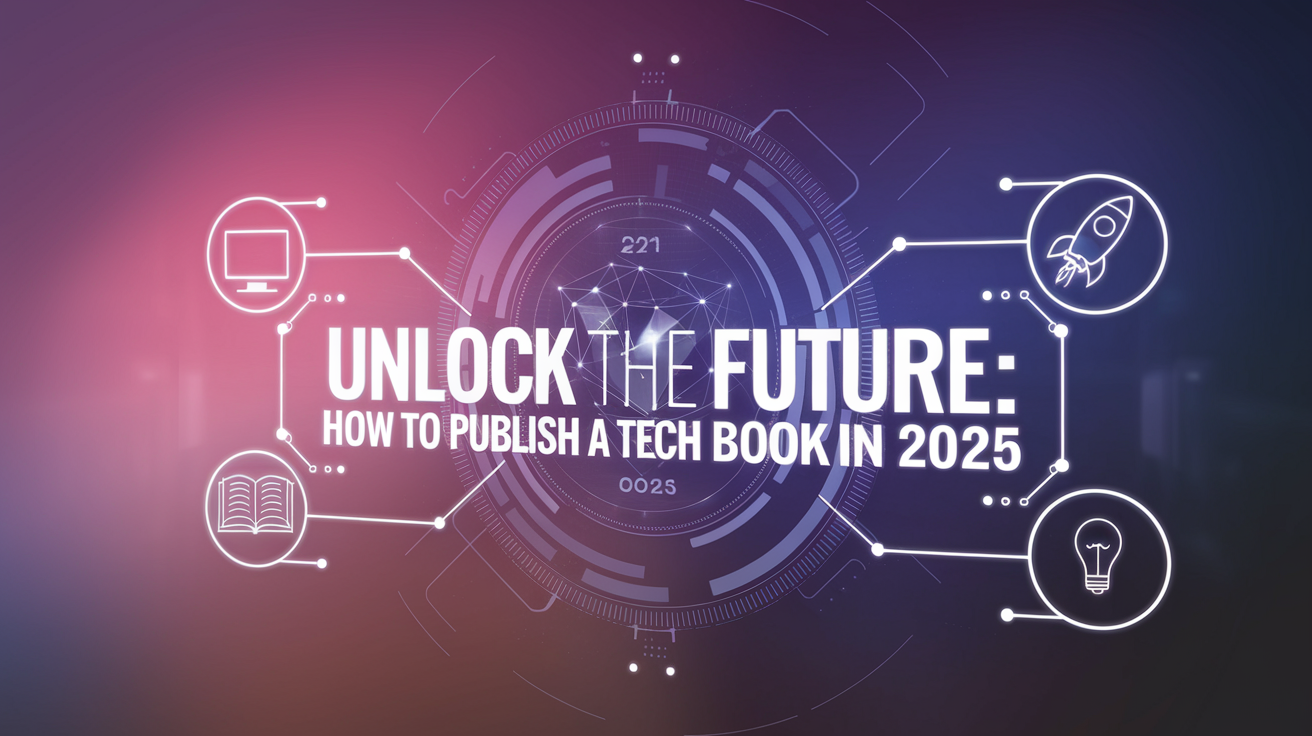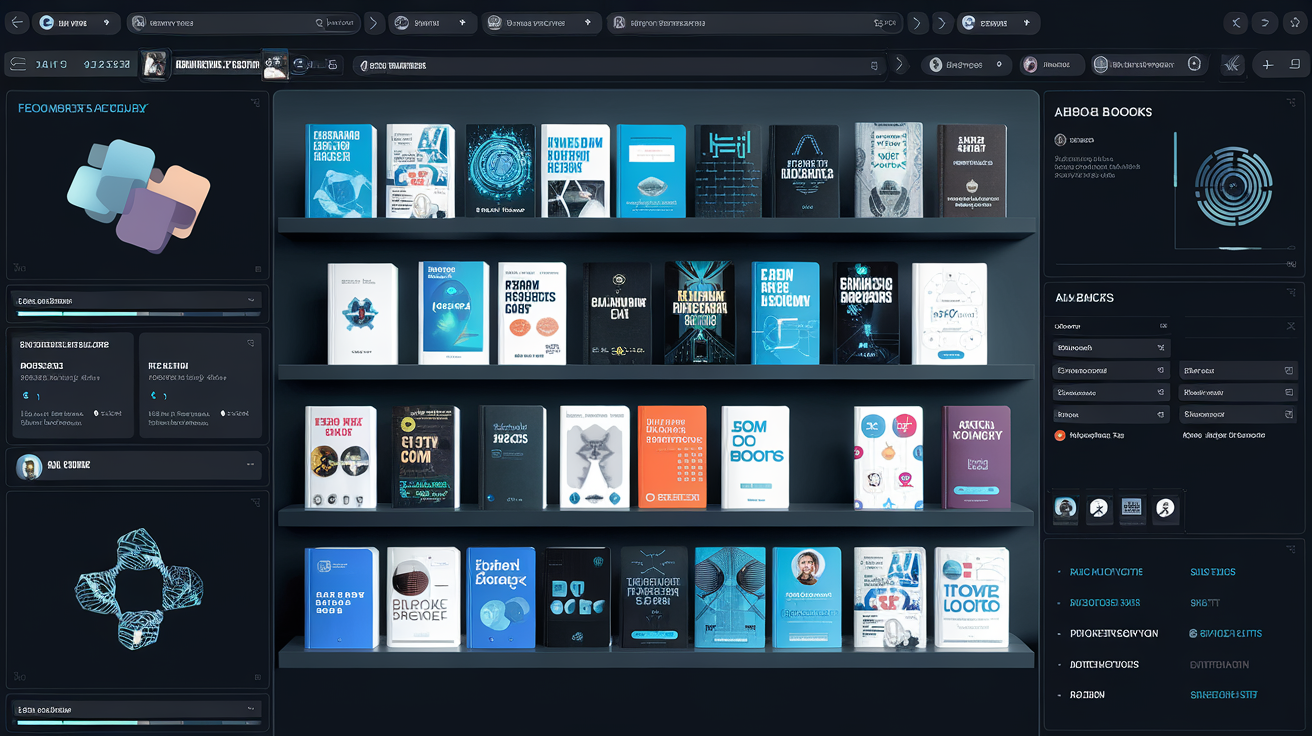Unlock the Future: How to Publish a Tech Book in 2025
Ever thought about diving into the fast-paced world of technology and sharing your insights with the world through a book?It's an exciting prospect, right?Whether you're a seasoned developer explaining the intricacies of AI, a futurist mapping out the next decade of innovation, or an entrepreneur sharing your journey in the tech startup scene, a well-crafted book can be a powerful way to establish your expertise and connect with your audience. But let's be honest, the thought of writing, editing, and publishing can feel pretty daunting, especially in a field that moves as quickly as technology. You might be wondering, "How do I even start?" or "Will my technical jargon be understandable to a wider audience?"
The good news is, you're not alone in these thoughts. The technology genre is booming, and there's a massive appetite for clear, engaging, and insightful books that demystify complex topics. I've noticed that from the bleeding edge of quantum computing to the practical applications of cybersecurity, or even the imaginative landscapes of science fiction driven by technological advancement, there's a readership eager for your knowledge. What I've found is that the biggest hurdle isn't necessarily the writing itself, but understanding the landscape and leveraging the right tools to bring your vision to life efficiently.
This isn't just about writing code or explaining algorithms; it's about storytelling, about making the complex accessible, and about building authority in a constantly evolving industry. Think about the impact you could have by publishing a guide on cloud computing, a memoir about your experiences in the startup world, or even a thrilling sci-fi novel powered by innovative tech concepts. The power to educate, inspire, and entertain is immense, and with the right approach, you can definitely make your mark.
Navigating the Evolving Tech Publishing Landscape

Truth is, the way we create and consume information about technology has shifted dramatically. Here's the thing: it's no longer just about dense technical manuals. Truth is, readers are looking for practical how-to guides that simplify complex processes, insightful analyses of industry trends, and even engaging narratives that explore the human side of technological change. Think about the burgeoning demand for books on topics like ethical AI, sustainable tech practices, or the future of remote work. Publishers and readers alike are seeking authentic voices that can cut through the noise and offer genuine value.
What I've found is that to succeed in the tech genre, authenticity and clarity are king. Your readers aren't just looking for facts; they're looking for understanding and context. This means not only mastering your subject matter but also being able to explain it in a way that resonates. Whether your book is a deep dive into machine learning, a practical guide to cybersecurity for small businesses, or even a historical account of a pivotal tech innovation, the core challenge remains making your expertise accessible and engaging.
This also extends to how you present your work. A well-structured book, with a clear narrative flow and compelling content, is crucial. Publishers are looking for authors who have a solid grasp of their subject and a clear vision for their book's message and audience. The rise of self-publishing has also opened up incredible opportunities for tech professionals to share their knowledge directly, bypassing traditional gatekeepers and connecting with their niche audience more effectively.
Crafting Content That Captivates Tech-Savvy Readers

Here's the thing: writing for a technology audience requires a unique blend of technical accuracy and compelling storytelling. One thing to keep in mind: you can't just dump data; you need to weave it into a narrative that keeps readers hooked. Consider a book on data visualization it's not enough to show charts; you need to explain why those charts matter and what insights they reveal. This often involves breaking down complex concepts into digestible chunks, using analogies that resonate, and perhaps even incorporating real-world case studies that demonstrate the practical application of your ideas.
On top of that, think about the visual aspect. Technology is often visual, whether it's code snippets, diagrams, or user interfaces. If your book involves these elements, ensuring they are presented clearly and professionally is crucial. A messy diagram or poorly formatted code can be a major turn-off for a discerning tech reader. You want your book to look as modern and professional as the technology you're discussing. This is where a bit of design savvy or professional help can go a long way.
Also, don't underestimate the power of a strong outline. Before you even start writing, map out your chapters, sections, and key points. This ensures a logical progression of ideas and helps you stay focused. For a tech book, this might mean structuring it chronologically, thematically, or by problem-solution. The goal is to guide your reader smoothly through your expertise, building their understanding step by step.
Mastering the Art of Tech Book Promotion and Distribution
So, youve poured your heart and soul into your tech book. Now, how do you make sure people actually find it and read it?This is where the often-overlooked but critically important world of promotion and distribution comes in. Simply publishing your book isn't enough; you need a strategy to get it into the hands of your target audience. For tech books, this means leveraging platforms and communities where your potential readers hang out.
Think about the online communities: GitHub for developers, LinkedIn for professionals, specialized forums for AI or cybersecurity enthusiasts, and even platforms like Reddit for specific tech sub-topics. Engaging with these communities authentically, sharing valuable insights (not just spamming links!), and building your reputation as an expert can organically lead people to discover your work. The reality is a well-placed mention in a relevant online discussion or a guest post on a popular tech blog can drive significant traffic.
What's more, consider different distribution channels. Beyond the usual Amazon Kindle and paperback options, think about niche platforms or direct sales through your own website. If your book is highly technical, offering it as a PDF download or bundling it with supplementary resources might also be appealing. The key is to understand where your ideal reader shops for information and make your book easily accessible there.
How FastRead Helps You Create Technology Content
Truth is, creating quality content used to take forever. But FastRead changes the game entirely. Whether you're writing about technology, technology, business, or any other topic, FastRead's AI handles the heavy lifting. It can help you brainstorm ideas, generate detailed outlines, draft compelling chapters, and even create eye-catching book covers that scream tech innovation. This means you can focus on the critical thinking, the unique insights, and the personal experiences that only you can bring to your book, while the AI takes care of much of the laborious writing and formatting.
Imagine getting a solid first draft of your guide to blockchain technology or your futuristic thriller concept in a fraction of the time it would normally take. FastReads advanced AI is trained on vast amounts of text, allowing it to generate content that is not only well-written but also contextually relevant to the tech genre. You can refine it's output, inject your personal voice, and ensure your technical accuracy remains impeccable, all while significantly accelerating your publishing timeline. It's like having a dedicated, incredibly efficient co-author whos always ready to help.
Book Genres FastRead Supports
FastRead works with tons of different genres:
Fiction: Science Fiction, Fantasy, Romance, Thriller, Mystery, Historical Fiction, Horror, Supernatural, and many more. Non-Fiction: Art & Photography, Autobiography, Biography, Cookbook, Diary, Dictionary, Encyclopedia, Essays, Guide / How-to, Health & Wellness, History, Journal, Math, Memoir, Parenting & Families, Science Fiction, Thriller.
Launching Your Tech Expertise into the Digital Sphere
So, you've got your manuscript ready, polished, and looking sharp, thanks to the power of AI-assisted writing. The next step is ensuring it hits the right digital shelves and catches the eye of your intended audience. This involves strategic keyword research for your book's title, description, and back-cover copy. Think about what terms your ideal reader would type into a search engine when looking for a book on, say, the fundamentals of cybersecurity or the future of virtual reality.
Plus, don't forget about metadata the hidden information that helps search engines and online retailers categorize and recommend your book. This includes choosing the right categories (like "Computers & Technology" or specific sub-genres like "Artificial Intelligence" or "Robotics") and relevant keywords. A well-optimized listing makes a huge difference in discoverability, ensuring that your meticulously crafted content finds it's audience without getting lost in the digital ether.
Whats more, consider building a pre-launch buzz. This could involve sharing snippets of your book on social media, engaging with influencers in your tech niche, or running a pre-order campaign. Creating a sense of anticipation can lead to a stronger launch day, potentially boosting your book's visibility on bestseller lists and within it's genre.
What's Your Next Step?
Ready to turn your groundbreaking tech ideas into a published book that makes an impact?The journey from concept to bookshelf is more accessible than ever, especially with the right tools at your disposal. Here's a tip: whether youre aiming to demystify complex programming languages, explore the ethical implications of ai, or spin a thrilling science fiction yarn, your voice matters. Take the leap and start planning your book today.
FastRead can help you create professional content in hours, not months. With it's AI-powered capabilities for generating outlines, drafting chapters, and even designing compelling covers, you can significantly streamline the entire publishing process. Don't let the perceived complexity of tech writing hold you back any longer. Your expertise is valuable, and the world is ready to learn from it.